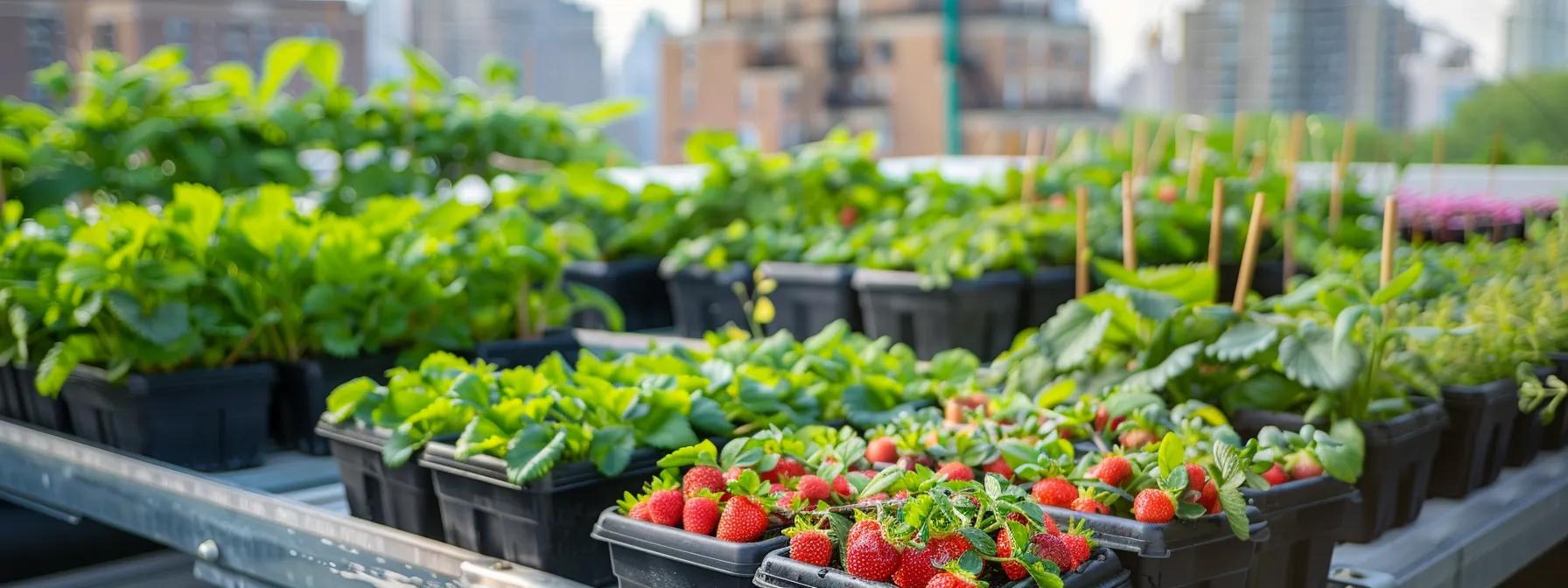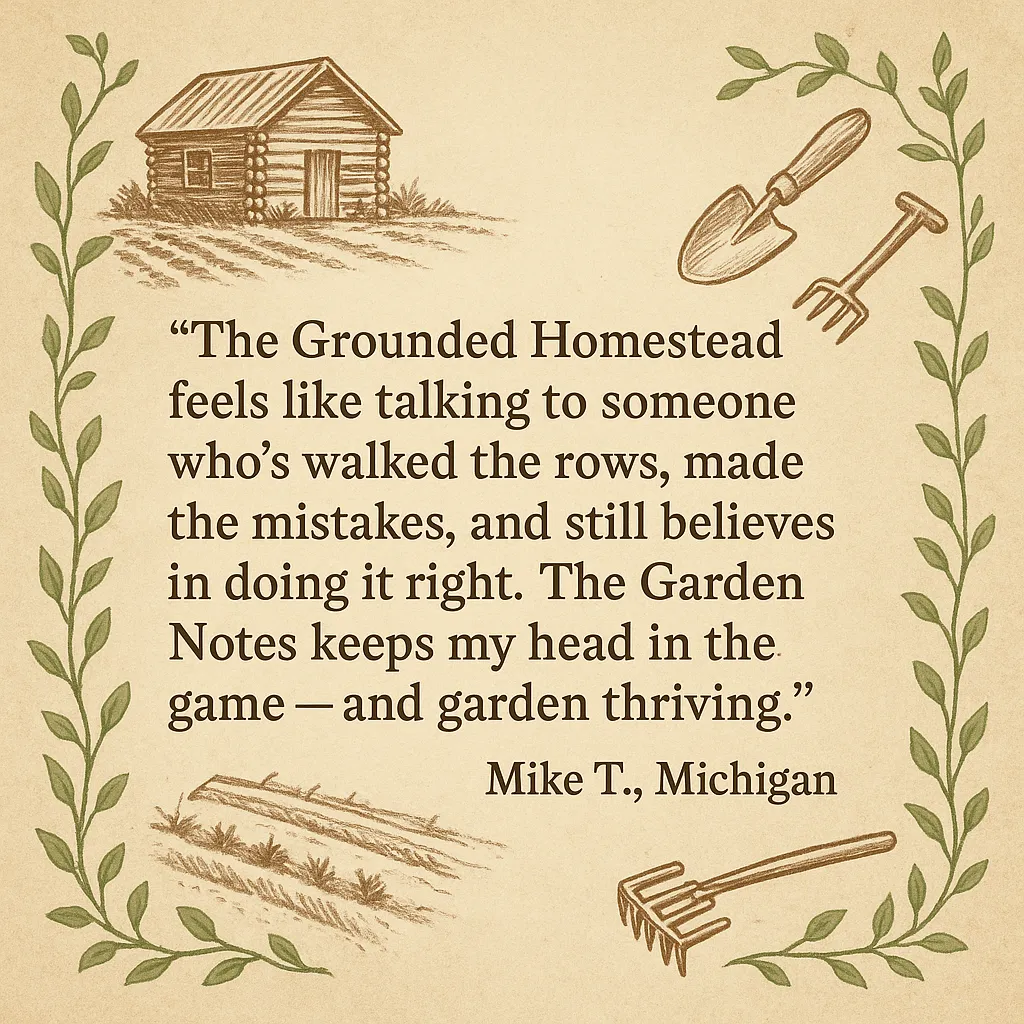
The Complete Guide to Propagating Strawberries: Growing Strawberries from Seed (and More)
The Complete Guide to Propagating Strawberries: Growing Strawberries from Seed (and More)
“Start from Seed? You Sure About That?”
The first time I told someone I was growing strawberries from seed, they looked at me like I’d said I was planting banana trees in Zone 5. “Isn’t that… a waste of time?” they asked.
I didn’t answer right away. I remembered standing at Grandma’s kitchen table, flipping through an old shoebox of saved seed packets she kept in a drawer with her canning rings and ballpoint pens. She didn’t pressure me one way or the other—just handed me a pack marked “Alpine: Fragaria vesca – saved 2003” and said, “Try it and see.”
That was the start of a different kind of strawberry journey. Slower. More intentional. But also more rewarding.
This guide is for folks who want that kind of control—who want to steward their strawberry patch, not just buy it in cell packs each spring. We’ll cover how to propagate strawberries every which way: from seed, from runners, by crown division, and through layering.
Let’s dig in.
Why Propagation Matters on a Homestead
Strawberries might be cheap at the store, but they’re a cornerstone crop in most gardens for a reason. They come back, they spread, and they give a sweet reward early in the season. But depending on nursery starts every year means giving up control of genetics, growing methods, and even disease risk.
When you propagate your own, you gain:
Access to heirlooms and rare types
The ability to save seed and grow year after year
Disease awareness and clean stock
Full-cycle stewardship of your food
There’s also something deeper: a kind of patience that forms when you grow from seed. You’re not just planting for this year’s harvest—you’re building your soil, your systems, and your future resilience.
Growing Strawberries from Seed
🍓 Why It’s Different
Most strawberries you buy are propagated by runners—clones of the mother plant. But seed-grown strawberries come with variability. This is great when you're hunting for flavor, toughness, or wild traits. Less great if you expect perfect uniform berries.
Keep in mind:
Seeds from hybrid varieties won’t grow true to type.
Best results come from open-pollinated or heirloom types.
Alpine and woodland types (Fragaria vesca) are ideal for seed growing.
🧊 Cold-Stratifying Strawberry Seeds
Strawberry seeds need a period of simulated winter (cold stratification) to germinate.
Here’s how to do it:
Moisten a paper towel and place seeds inside.
Fold it into a labeled zip-top bag.
Place in the fridge (not freezer) for 2–4 weeks.
Check for mold weekly and keep moist—not soggy.
🗣️ Grandma used to say: “Seeds need a winter nap, just like we do.”
⏱ When to Start Seeds (by Zone)
USDA Zone Start Indoors (Weeks Before Last Frost) 3–4 12–14 weeks 5–6 10–12 weeks 7–8 8–10 weeks 9–10 6–8 weeks
🔧 What You’ll Need
Fine seed-starting mix (not potting soil)
Shallow trays or cells
Humidity dome or plastic wrap
Grow lights (12–16 hours/day)
Heat mat (if under 65°F indoors)
Labels (trust me, you’ll forget)
🌱 Germination & Early Care
Misting, not watering—drenching kills seedlings fast.
Use a fan or vent dome daily to reduce damping off.
Thin with scissors once you have 2–3 true leaves.
Let them grow until they have at least two sets of true leaves before transplanting.
Transplanting Seedlings for Strong Crowns
🌿 Potting Up
Once roots are visible and leaves are strong, move them to 3–4" pots to develop robust crowns. The crown is where leaf and root meet—this is the heart of the plant.
🪴 Soil Setup
Use:
Loamy, well-draining soil
Light compost or balanced organic fertilizer (like 5-5-5)
Avoid heavy manures or nitrogen-rich mixes early on
🌤 Hardening Off
Before planting outdoors:
Place trays in partial shade outdoors for 2 hours/day
Increase exposure over 7–10 days
Water consistently but don’t overdo it
This avoids shock when they meet real sun, wind, and cool nights.
Propagating by Runners
📍 How It Works
Runners are horizontal stems that grow daughter plants. These clones are genetically identical to the parent and root easily.
Best varieties: June-bearing and vigorous everbearers.
🧷 How to Root Runners
Identify a healthy runner.
Place a small pot of soil next to it.
Pin the daughter plant down using a U-shaped clip or rock.
Water regularly.
After 3–4 weeks, snip the runner from the parent.
📌 Diagram: A simple sketch of pegged-down runners in containers or garden beds with notes on cut points.
🪴 Don’t Crowd Companion Plants
If propagating in-ground, avoid close plantings of aggressive herbs or brassicas nearby. Strawberries need airflow and light to establish new roots.
Dividing Strawberry Crowns
Older plants often develop multiple crowns. Each can become a new plant—with care.
✂️ Best Practices
Divide when plants are dormant (late fall or very early spring)
Use sterilized garden knives
Each division needs:
One crown
One healthy root mass
Replant into fresh soil, water in, and mulch lightly.
Layering for Hard-to-Root Types
Some strawberries—especially alpine or low-runner types—don’t easily reproduce on their own. Layering gives them a nudge.
🪻 Layering Method
Gently bend a healthy stem to the soil.
Bury one node (where a leaf joins the stem) about ½" deep.
Secure with a small rock or clip.
Water regularly. After 3–4 weeks, roots should form.
Cut from parent and transplant.
When to Propagate for Yield vs. Maintenance
🗓️ Propagation Calendar
Purpose Best Timing Yield Expansion Summer into early fall Patch Renewal Late fall or early spring Seed Start Winter (indoors)
Avoid letting your strawberry patch age past 3–4 years without refreshing. Older crowns produce fewer berries and invite pests.
Keep It Clean: Sanitation & Disease-Free Stock
Only propagate from healthy plants.
Watch for crown rot, leaf spots, or virus stunting.
Always clean:
Tools
Trays
Hands
🧤 Grandma’s rule: “Don’t multiply your mistakes.”
Top 5 Mistakes to Avoid
Overwatering seedlings
Forgetting to stratify seeds
Starting too early without a grow light
Overcrowding trays or pots
Trying to propagate sick or stressed plants
Track Your Progress: Start a Propagation Journal
Every season is a chance to improve.
Track:
Variety
Method (seed, runner, etc.)
Dates
Success/failure notes
Zone-specific outcomes
📥 [Download the Free Propagation Tracker PDF] (Lead Magnet)
Seeds, Shoots, and Stewardship
The work of propagation isn’t fast. But it’s deep. You’ll understand your patch more. You’ll spot disease faster. You’ll care more about soil, timing, and sunlight—not because someone told you to, but because your plants taught you.
Jeremiah 29:5:
“Build houses and settle in them; plant gardens and eat what they produce.”
You’re doing just that—one crown, one runner, one seed at a time.
Looking for more professional guidance & homesteading resources?
Explore our trusted guides to learn more about growing healthy food, managing your land, and building lasting systems for your homestead. Whether you're looking for planting tips, seasonal checklists, or natural solutions that actually work—we’ve got you covered.
Start with these helpful reads:
Everything to know about Strawberries:
Start with Strawberries: Ground Your Garden with Fruit that Grows Back
6 Common Strawberry Plant Diseases and How to Treat Them Naturally
The 6 Pests That Wreck Strawberry Crops—and How to Beat Them Naturally
Beyond Straw: Choosing the Right Mulch for Every Strawberry Bed
Runner Management 101: Multiply Your Strawberry Patch with Purpose
Frost, Flood, and Fungus: Protecting Strawberries in Extreme Weather
The Best Strawberry Varieties for Continuous Summer Harvests
Top 14 Practical Uses for Fresh Strawberries (Beyond Jam)
Start a U-Pick Strawberry Business (Even on 1 Acre)
How to Fertilize Strawberries for Yield, Flavor, and Runner Control
Strawberries in Small Spaces: Balcony, Border, and Vertical Growing Techniques
Wild Strawberries vs. Cultivated: Should You Grow Fragaria vesca?


Facebook
Instagram
X
Youtube